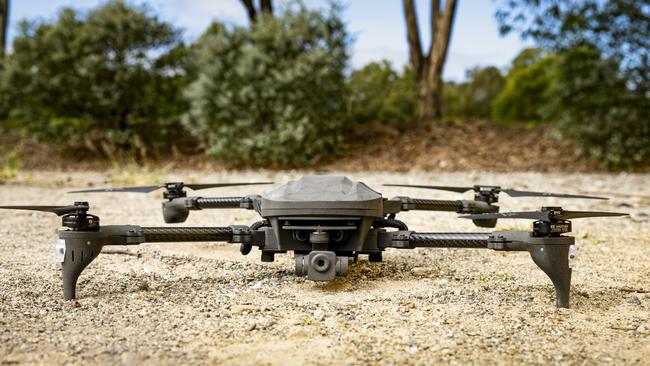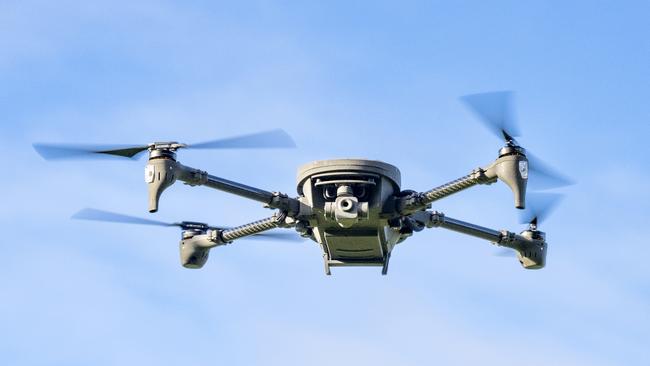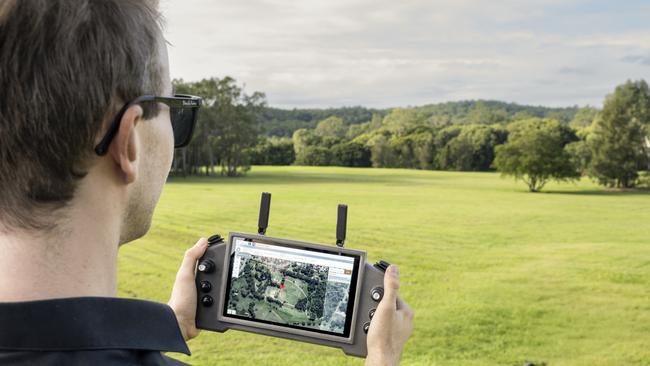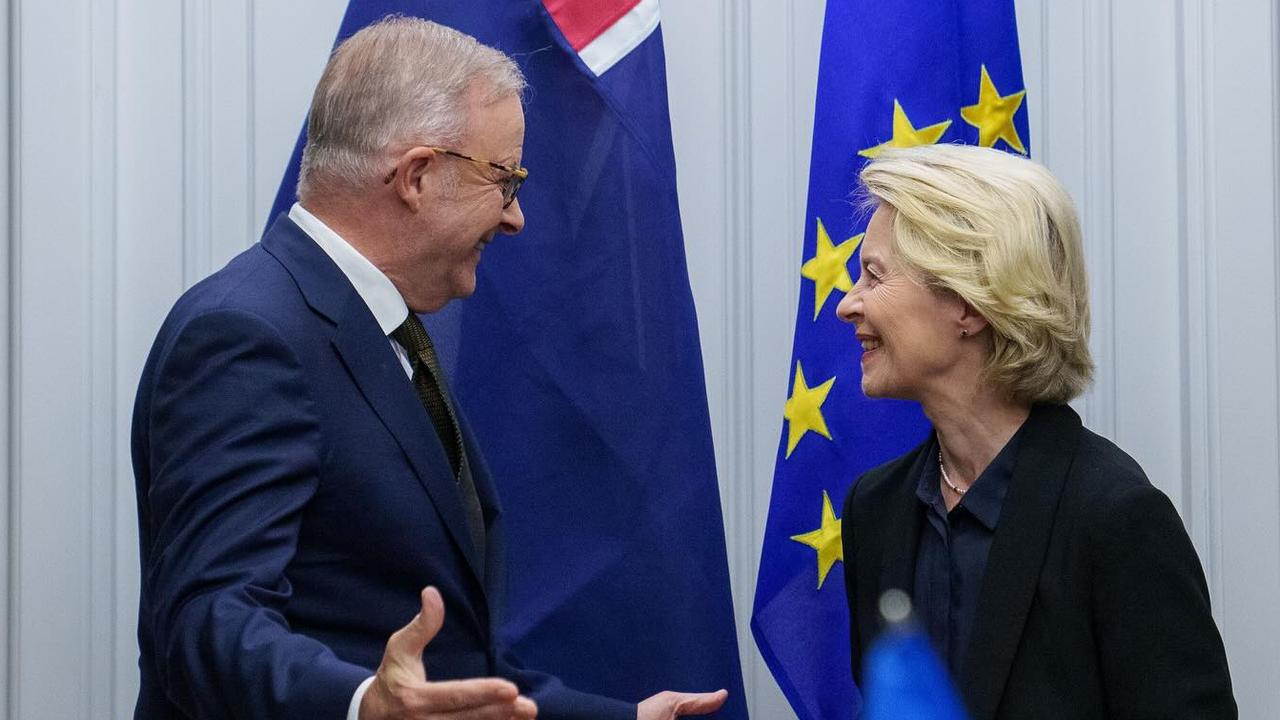Cheap Aussie ‘Mozzie’ all the buzz to replace global market-leading Chinese drones
The locally made drone gives Australian and allied users a trusted alternative to Chinese drones that dominate the global market.

An Australian technology company is poised to meet a critical challenge for the nation’s security, designing a $5000 drone for military use with domestically sourced parts and those from friendly countries.
The only Chinese component in Grabba Technologies’ Mozzie drone is its electric motor, and the company is working with two local firms that are close to producing Australian-made alternatives.
The privately owned Brisbane company was selected for the challenge by Defence’s Advanced Strategic Capabilities Accelerator, which needed an affordable multi-mission drone under 2kg for use by the Australian Defence Force and national security agencies.
The locally made drone gives Australian and allied users a trusted alternative to Chinese drones that dominate the global market.
The ASCA challenge followed the removal from service of more than 800 Chinese-made drones that had been operated by the ADF, and 41 in use with the Australian Border Force.
The Mozzie, which can undertake surveillance missions or drop bombs on enemy soldiers, will meet US “blue list” guidelines for technology products with entirely friendly-nation supply chains.
The explosion in drone warfare seen in Ukraine has piled pressure on the Australian government to bring uncrewed systems into service as rapidly as possible.
Grabba Technologies is set to sell 260 of the drones to Defence for testing by the army, navy and air force, and hopes to sell tens of thousands more to the ADF and allied militaries, and law enforcement agencies.

The basic Mozzie drone can be tailored to meet the requirements of each military service, with additional protection, radio technologies, cameras and payloads.
Grabba executive chairman Ross McKinnon said the challenge was a tough one, requiring the company to build the drone “from the ground up” to meet ASCA requirements.
The company had to design many of the drone’s components, including its base station and on-board gimbal to keep its camera steady, in order to keep costs down and ensure a trusted supply chain.
“That was actually a really good thing, because it meant that we weren’t just rebuilding a foreign product,” Mr McKinnon said.
“This is a world-leading drone in its category, sub-2kg, but low-cost and Australian-made.”
The company will sell the drones for $5000 each to the Australian government, which kicked in $2.2m to develop it, but will charge about twice that for an export version. The next-cheapest drone on the international market with equivalent specifications costs about $18,000.
“There’s actually a gap in the market for a blue-list equivalent drone at this price point. So we can sell this and export this because of the constraints the commonwealth set on us,” Mr McKinnon said.

The company is also developing larger versions of the drone, up to one tonne.
The ASCA challenge was aimed at developing a sovereign drone that could be produced at scale to meet emerging strategic challenges.
Mr McKinnon said while the market wasn’t yet big enough to pump out large quantities of the aircraft, the company could rapidly ramp up production “if we get in a scrap”.
He said the company was already working with international buyers, including the US Department of Homeland Security, and had partnered with Australian-owned company EPE, which supplied robots to allied militaries.
“They say our drone is the best and they are taking it to the global market,” Mr McKinnon said.
The ADF has lagged many militaries in getting uncrewed systems into service, acquiring its first lethal drones last year.
It purchased an undisclosed number of US-made Switchblade 300s – a lightweight “loitering munition” – and has a variety of unarmed drones used for intelligence, surveillance and reconnaissance tasks.
Australian taxpayers have also contributed $1bn towards the development of Boeing’s Ghost Bat, a “loyal wingman”-style drone designed to operate with manned fighter jets.
Boeing says the uncrewed jet is one of the most advanced aircraft of its kind in the world, but it is years away from entering service and faces stiff competition from rivals selected for a key US Air Force program.




To join the conversation, please log in. Don't have an account? Register
Join the conversation, you are commenting as Logout